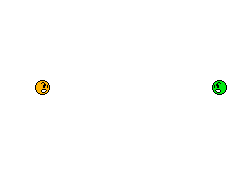Results 1 to 10 of 37
Hybrid View
-
01-17-2017, 02:31 PM #1Senior Member

- Join Date
- Nov 2016
- Location
- Chicago Suburbs
- Posts
- 1,105
Thanked: 292
The two questions that need to be answered are:
1. "How straight is straight for the razor edge?"
2. "How flat is flat for the surface of the stone?"
We are trying to generate a razor edge that is uniform at the submicron level. A DMT Diaflat lapping plate is certified to be flat to +/-0.0005". While that seems impressive, 0.0005" (1/2 mil) is 12.5 microns. We are unlikely to get our stones much flatter than that.
Thus, to create a uniform edge on a razor that is not quite straight using a stone that is not quite flat, we need to use a combination of circles, straight strokes, and x-strokes. Another thing that I do is to rotate the stone 180 degrees mid-way through the honing on each stone to help compensate for variations in the flatness of the stone side to side.
-
01-17-2017, 05:55 PM #2Senior Member



- Join Date
- Apr 2012
- Location
- Diamond Bar, CA
- Posts
- 6,553
Thanked: 3215
The flatness of the stone, does not matter that much, because we are not honing on the exact same point with each stroke, that it is smooth, is more important.
A flatter stone is a bit more efficient, as more grit is in contact with the razor, but nothing that an extra stroke or two would not compensate for.
The age-old question, how did the old guys get their stones flat, before dial indicators and diamond plates? And how flat is a grinding wheel or a spinning sanding belt?
-
01-18-2017, 03:36 AM #3
-
01-18-2017, 04:03 AM #4

I had also heard / read that ideally you wanted the striations to be uniform on the bevel at more or less a diagonal pattern, i.e., 45 degrees, lined up from toe to heel along the edge of the bevel and meeting at the apex from both sides.
///////\\\\\\\ diagonal striations as opposed to ||| ||| straight striations...doubt it matters, whatever floats your boat, but the X stroke ensures you're getting the uniform creation of the bevel and produces these consistent type of striations.
Mind you, I'm basically at the place where honing gymnastics, i.e., do what it takes to pass the shave test...or do what works to try and get as uniform a bevel as you can will do me just fine.
That, and a tantrum or three I find helps immensely in setting the bevel, yelling at the razor encourages the bevel to set as well....think I saw that in one of Glen's videos....
-
The Following User Says Thank You to Phrank For This Useful Post:
Carlospppena (01-18-2017)
-
01-21-2017, 03:37 PM #5

Yelling at bevels. That's more for advanced honing techniques section of SRP.
Plus ça change, plus c'est la même chose. Jean-Baptiste Alphonse Karr.
-
The Following User Says Thank You to Kees For This Useful Post:
Carlospppena (01-21-2017)
-
01-21-2017, 08:50 PM #6Senior Member



- Join Date
- Dec 2014
- Location
- Virginia, USA
- Posts
- 2,224
Thanked: 481
Sometimes you just have to give the razor a little bit of verbal encouragement and moral support. Let the rusty little
 know that if it doesn't get it's
know that if it doesn't get it's  together and shave right, there's gonna be a reckoning.
together and shave right, there's gonna be a reckoning. 

Last edited by Marshal; 01-21-2017 at 08:54 PM.
-
The Following User Says Thank You to Marshal For This Useful Post:
Carlospppena (01-21-2017)
-
01-17-2017, 05:56 PM #7At this point in time...




- Join Date
- Jun 2007
- Location
- North Idaho Redoubt
- Posts
- 27,182
- Blog Entries
- 1
Thanked: 13250
Gotta love the Esoteric discussions on SRP sometimes
One thread discussing the Flatness of the hones and the X stroke being needed and the one next to it discussing using Rounded and Convex hones
http://straightrazorpalace.com/hones...ed-stones.html
Maybe I should just Merge the two and watch the fun

-
01-17-2017, 06:04 PM #8

Hone and blade flatness aside. I do the x because it's what I taught my self over countless hours of reading and countless hours of practice.
-
01-17-2017, 06:07 PM #9Senior Member



- Join Date
- Dec 2014
- Location
- Virginia, USA
- Posts
- 2,224
Thanked: 481


 90Likes
90Likes LinkBack URL
LinkBack URL About LinkBacks
About LinkBacks







 Reply With Quote
Reply With Quote

